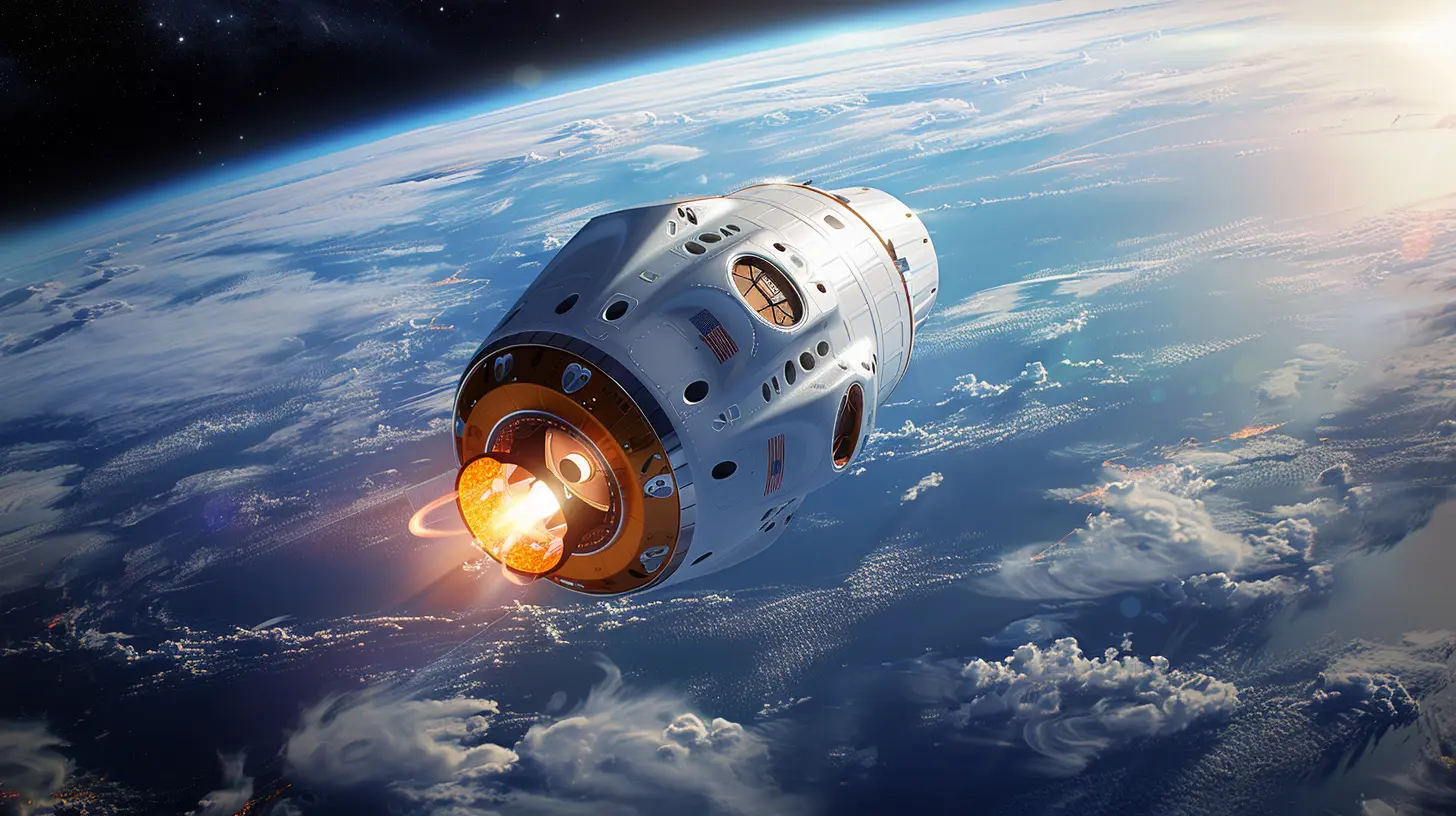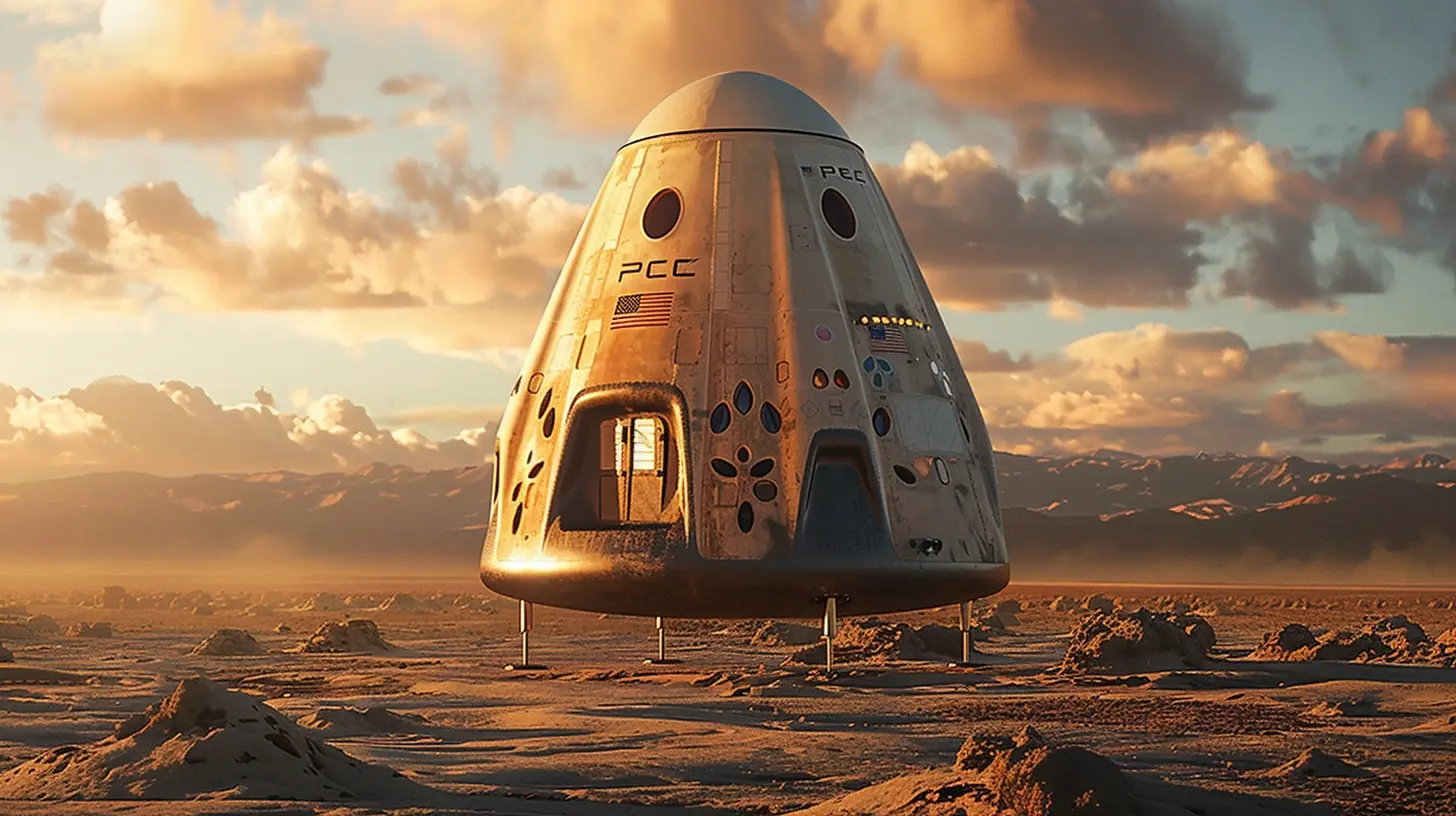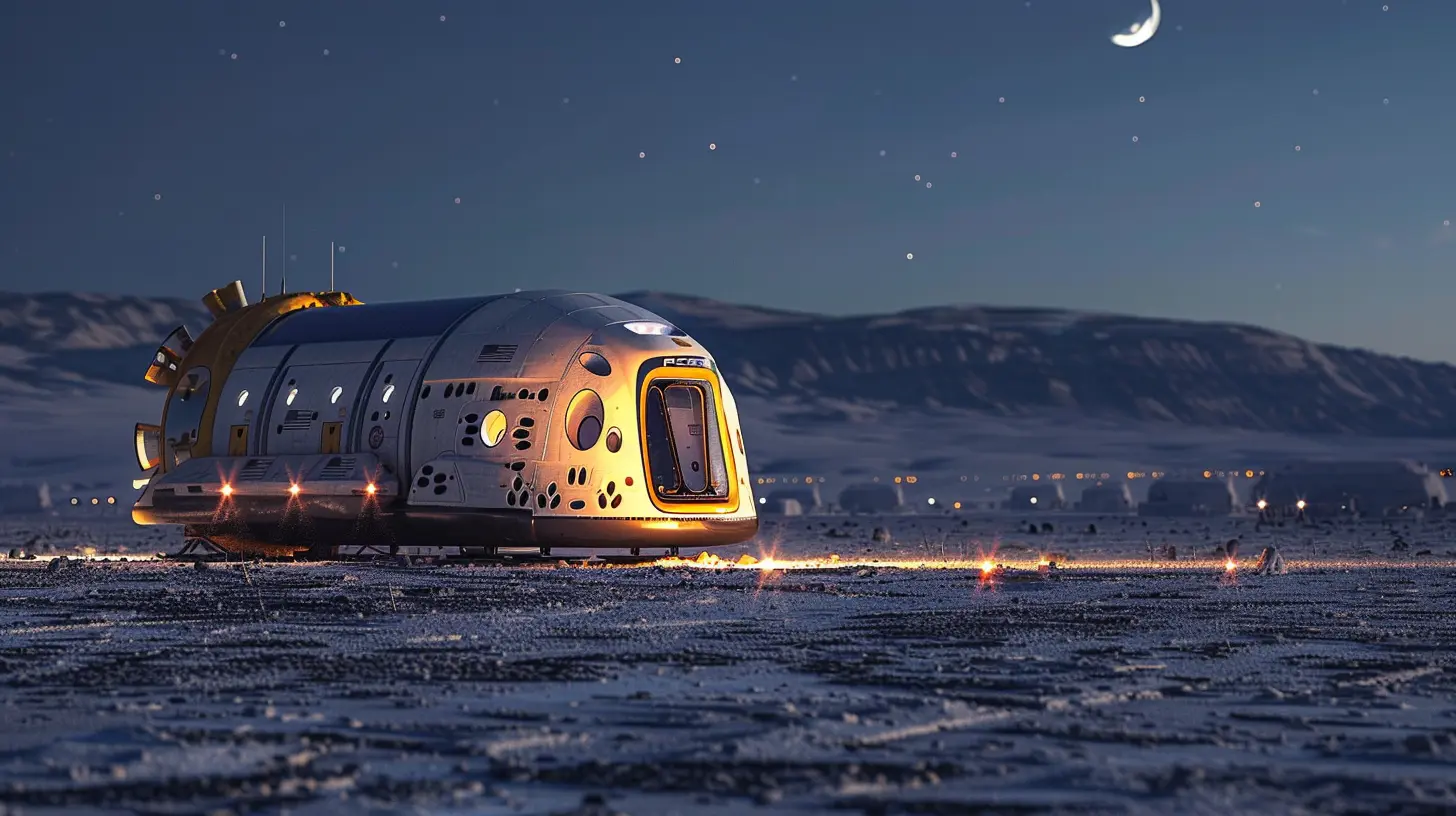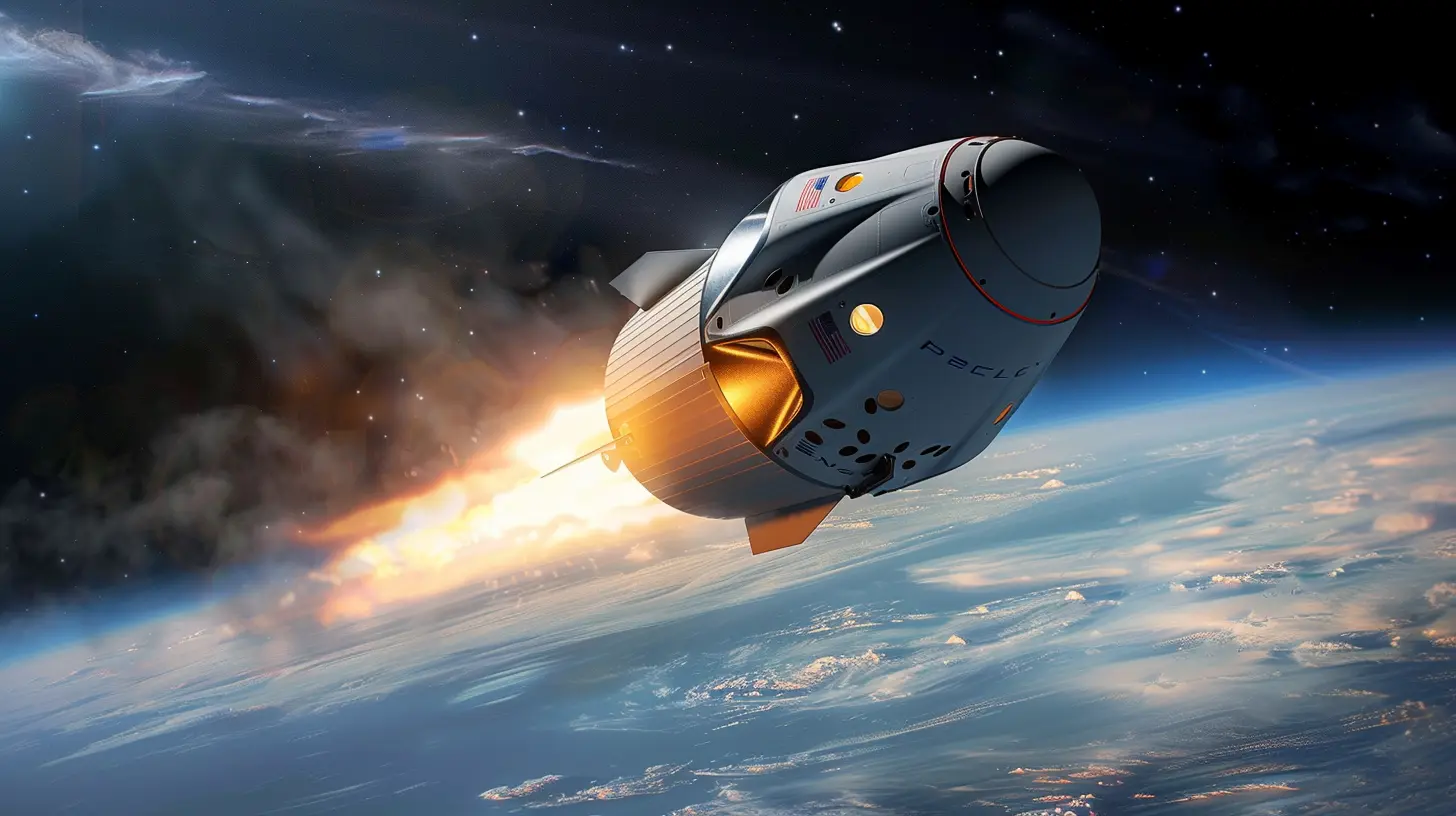How Space Missions are Testing the Limits of Human Endurance
2 August 2025
Let’s face it—space is the most unforgiving frontier out there. No oxygen, extreme temperatures, bone-crushing silence, and radiation that could fry your DNA. Yet, here we are, hurling ourselves into it in metal cans all in the name of exploration.
But space is more than just a dangerous place. It’s the ultimate test of human grit, both physically and mentally. Space agencies like NASA, ESA, and Roscosmos aren’t just sending machines into orbit—they’re sending people. And to survive months (or even years) away from Earth, astronauts must become something close to superhuman.
So, how exactly are space missions testing the limits of human endurance? Buckle up, because we’re about to take a zero-gravity deep dive into it.
🚀 The Physical Toll: Living in Microgravity Isn't a Vacation
If you think floating around in space looks fun, you're right—but it also comes with a laundry list of bodily horror stories. Microgravity, the condition where gravity is so weak that you become weightless, messes with the way your body operates on a fundamental level.🦴 Bone Density Loss – A Downhill Slope
Here on Earth, gravity is always working against us, and surprisingly, that's a good thing. Our bones stay strong because they’re constantly resisting our body weight. But in space? That resistance disappears, and your bones start to weaken. Astronauts can lose up to 1% of their bone density per month in space. That’s faster than the bone loss rate in elderly folks on Earth who have osteoporosis.Imagine being in your prime and still walking around with the bones of someone twice your age after a long mission. Not pretty.
💪 Muscle Atrophy – Even the Buff Get Buffeted
No matter how ripped you are before launch, space has a way of leveling the playing field. With no gravity, your muscles don’t need to work as hard to move around. That sounds great for lazy people, right?Well, not quite. Muscle atrophy kicks in fast, and without intense daily exercise regimes onboard the ISS (we’re talking about two hours a day minimum), astronauts would come back barely able to walk.
🧠 Space Brain – The Cognitive Crunch
Physically, astronauts go through a lot. But mentally? That's a whole different beast. Consider this: you're trapped in a cramped module floating hundreds of miles above the Earth with the same crew for months. There’s no fresh air, no sunlight (thanks, space station shielding), and zero privacy.This isolation and confinement can lead to a host of issues, from depression and insomnia to irritability and cognitive decline. NASA even coined the term “space fog” to describe the mental sluggishness astronauts can experience.
🌌 Radiation Exposure: A Silent and Constant Threat
Now let’s talk about something less visible but way scarier—space radiation. While you and I are protected by Earth’s magnetic field and atmosphere, astronauts are out in the wild without a shield.☢️ Cosmic Roulette – The Radiation Game
In low Earth orbit, radiation levels are already up to 10 times higher than on the ground. Venture further—say, to the Moon or Mars—and those levels skyrocket. Cosmic rays, solar particle events, and galactic cosmic radiation bombard the body 24/7.This constant exposure increases the risk of cancer, damages cells, and can even mess with the brain's neural pathways. Makes a sunburn look like child’s play, doesn’t it?
🧬 Genetic Mutations – DNA Under Fire
Radiation doesn’t just hurt in the short term; it alters DNA, which could lead to long-term genetic mutations. Scientists worry about how these mutations could impact the health of astronauts not just during the mission, but decades afterward.
🛏️ Sleep and Circadian Rhythm: When Day and Night Get Screwy
Try sleeping when the Sun rises and sets every 90 minutes. That’s life on the International Space Station. Astronauts orbit Earth about 16 times a day, messing with their internal body clocks.😴 Sleep Deprivation – Not Just Being Tired
Sleep in space isn’t just about catching z’s. Poor sleep affects decision-making, memory, and reaction time, all of which are critical when you're piloting a spacecraft or performing a spacewalk. One wrong move? Catastrophe.Astronauts often rely on sleep aids just to get a few hours of shut-eye. That’s how essential rest is—and how hard it is to come by in orbit.
🧪 Psychological Resilience: The Secret Weapon of Space Travelers
If there’s one thing that’s absolutely vital in space, it’s mental resilience. NASA and other agencies screen astronauts for psychological toughness as rigorously as they test for physical fitness.🧘 Mental Fortitude – Born or Built?
Astronauts undergo extensive training in conflict resolution, stress management, and mindfulness. They’re taught to remain calm under pressure and handle interpersonal tensions with grace. Because let's be honest—being stuck in a tin can with the same few people can test anyone’s nerves.🧑🚀 The Role of Personality and Team Dynamics
NASA even uses personality tests to build cohesive teams. It’s not enough to be smart and strong—you have to be likeable, adaptable, and emotionally intelligent. One hot-headed astronaut could make or break a mission.🌍 Preparing for Mars: The Ultimate Testbed
Everything we’ve talked about so far? That’s just for near-Earth missions. Now imagine a 2- to 3-year journey to Mars and back.🏜️ Analog Missions on Earth – Testing Grounds
Space agencies are preparing in unique ways. In places like Hawaii, the Arctic, and the Utah desert, analog missions simulate space conditions. Crew members live in isolation, follow strict schedules, and deal with limited communication—just like they would on Mars.These Earth-based simulations help scientists understand how crews respond to prolonged isolation, minimal resources, and mission-critical stress.
🧬 Evolving Human Physiology for the Long Haul
There’s even talk of enhancing the human body through biotechnology—think gene editing to reduce radiation sensitivity or using nanobots to maintain muscle mass. Sounds like sci-fi? It’s getting closer to reality.🛰️ The Role of Technology: Supporting Human Endurance
Of course, no one is sending people into space without serious tech support.🤖 Smart Suits and Exoskeletons
Spacesuits are becoming smarter. Future designs will monitor vital signs in real-time, optimize oxygen flow, and even enhance mobility. Imagine a wearable robot that helps you lift things in low gravity. That’s the exoskeleton edge.💊 Personalized Medicine in Space
Biomedical monitoring is getting so advanced that doctors can adjust medications and treatments remotely. Picture this: your body metabolizes drugs slower in space, so dosages have to be custom-tweaked. Personalized medicine is essential when Earth is millions of miles away.🧪 The Twins Study: Proof of Space’s Brutal Impact
Let’s not forget NASA’s famous “Twins Study” with astronauts Scott and Mark Kelly. Scott spent nearly a year aboard the ISS while Mark stayed on Earth. The differences in their bodies after the mission were staggering.Changes in gene expression, cognitive performance, and even telomere length (those are the protective caps on your DNA) showed how spaceflight affects the human body in ways we’re still learning to understand.
🌠 What It All Means For the Future
Why are we pushing the limits of human endurance in space? Because the big prize isn’t just Mars. It's about creating a future where humans are a multi-planetary species. But to do that, we need to know how far we can really stretch ourselves—physically, psychologically, and biologically.We're rewriting the rules of biology as we know it. Every mission is a high-stakes experiment in extreme adaptation. And the lessons we learn up there? They might just help us down here—whether it's for better medical care, remote work environments, or even handling isolation during pandemics.
Final Thoughts: The Human Spirit vs. the Final Frontier
Human beings are wired to push limits. Space just happens to be the roughest proving ground of all. But despite the danger, the discomfort, and the soul-numbing solitude, astronauts keep going.Because beyond every challenge lies the most fantastic view—a glimpse of Earth from the void, a reminder of where we came from, and a dream of where we’re going.
So yeah, space is testing the limits of human endurance. But we're passing that test—one mission at a time.
all images in this post were generated using AI tools
Category:
Space TechnologyAuthor:

Ugo Coleman
Discussion
rate this article
1 comments
Rachael Ross
Exploring the cosmos reveals not just the vastness of space, but also the incredible resilience of the human spirit. Every mission inspires us to push boundaries and reach for the stars!
August 3, 2025 at 11:27 AM

Ugo Coleman
Thank you! Indeed, space missions not only challenge our physical limits but also ignite our collective determination to explore and innovate.


